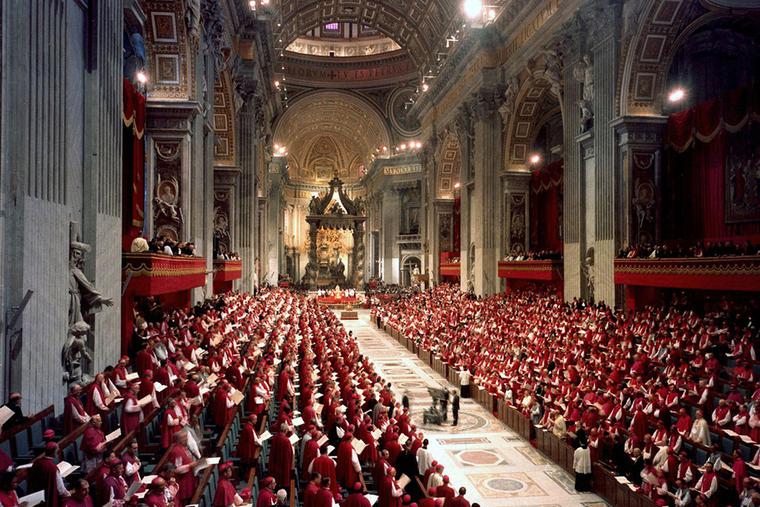- Feb 5, 2002
- 166,616
- 56,251
- Country
- United States
- Faith
- Catholic
- Marital Status
- Married
- Politics
- US-Others
COMMENTARY: The Second Vatican Council was a key moment for rediscovering the profound truth of the Church’s identity.
Nov. 21 of this year will mark the 60th anniversary of Vatican II’s landmark dogmatic constitution on the Church, Lumen Gentium. This year, therefore, offers a special opportunity to reflect anew on this extraordinarily rich text, which continues to serve as a crucial reference point for the Church.
With this solemn document, the Church sought to respond to a key question that the Council Fathers wanted to answer: What does the Church have to say about herself? During the early debate on the document, Belgian Cardinal Leo Jozef Suenens posed this question as a guiding principle for the Council’s work.
In view of Vatican II’s ambitious goals of realizing Christian unity and giving a new impulse to evangelization, the question took on paramount importance. The Council Fathers desired to present a more profound vision of the Church, going beyond an emphasis on the institutional and visible aspect, which had been dominant in previous centuries.
The draft for a constitution on the Church, produced during the preparation of the Council and presented to the Council Fathers on Dec. 1, 1962, offered a start in this direction. This text described the profound supernatural reality present in the Church — its origin in the eternal plan of the Father, realized by the Son and the Holy Spirit, and its identity as the Mystical Body of Christ.
In continuity with earlier Church teaching, this initial text also affirmed that the Church, while remaining a mystery, is also a human society and visible institution.
Continued below.

 www.ncregister.com
www.ncregister.com
Nov. 21 of this year will mark the 60th anniversary of Vatican II’s landmark dogmatic constitution on the Church, Lumen Gentium. This year, therefore, offers a special opportunity to reflect anew on this extraordinarily rich text, which continues to serve as a crucial reference point for the Church.
With this solemn document, the Church sought to respond to a key question that the Council Fathers wanted to answer: What does the Church have to say about herself? During the early debate on the document, Belgian Cardinal Leo Jozef Suenens posed this question as a guiding principle for the Council’s work.
In view of Vatican II’s ambitious goals of realizing Christian unity and giving a new impulse to evangelization, the question took on paramount importance. The Council Fathers desired to present a more profound vision of the Church, going beyond an emphasis on the institutional and visible aspect, which had been dominant in previous centuries.
The draft for a constitution on the Church, produced during the preparation of the Council and presented to the Council Fathers on Dec. 1, 1962, offered a start in this direction. This text described the profound supernatural reality present in the Church — its origin in the eternal plan of the Father, realized by the Son and the Holy Spirit, and its identity as the Mystical Body of Christ.
In continuity with earlier Church teaching, this initial text also affirmed that the Church, while remaining a mystery, is also a human society and visible institution.
Continued below.

The Mystery of the Church: ‘Lumen Gentium,’ 60 Years Later
COMMENTARY: The Second Vatican Council was a key moment for rediscovering the profound truth of the Church’s identity.
